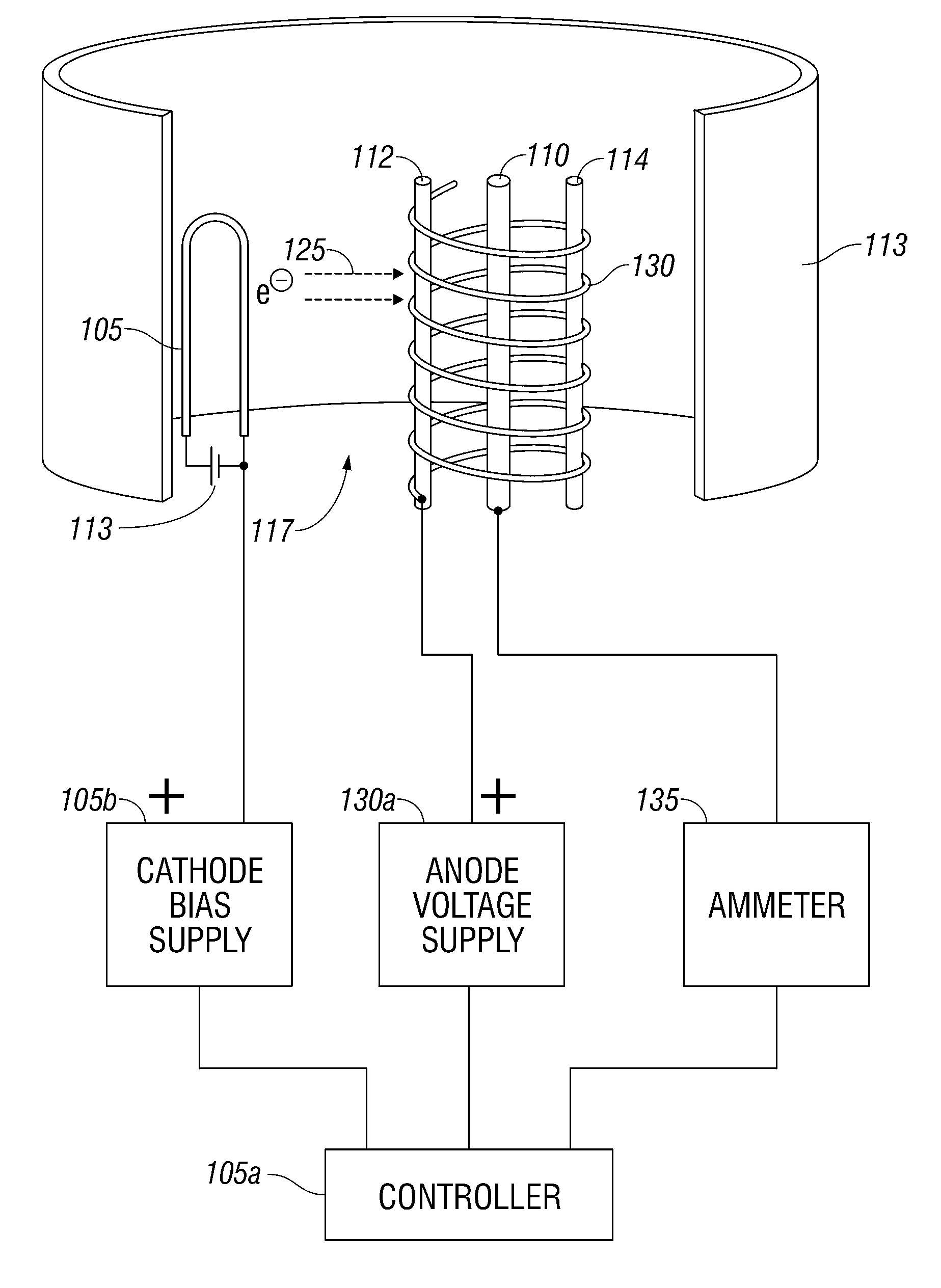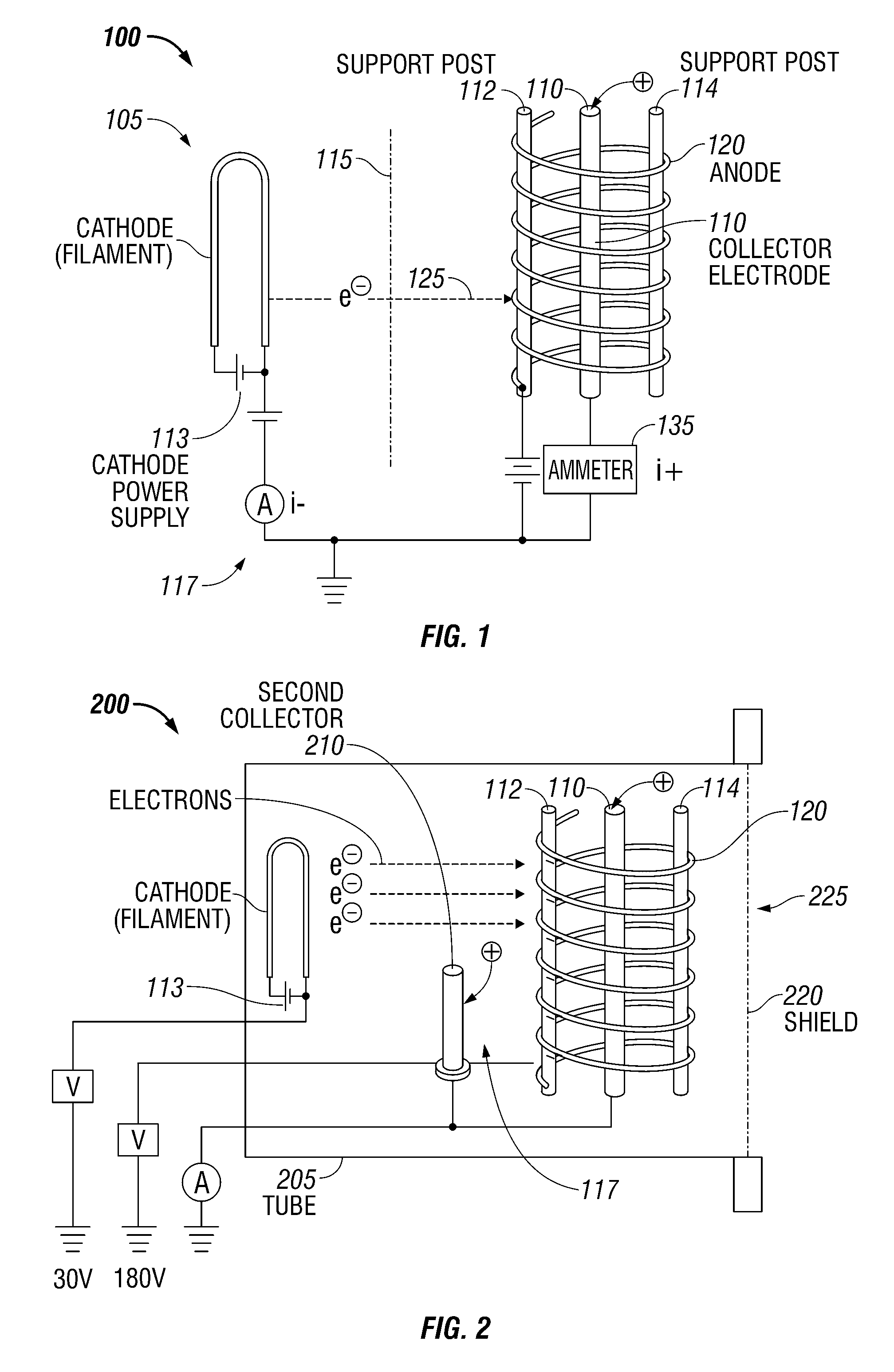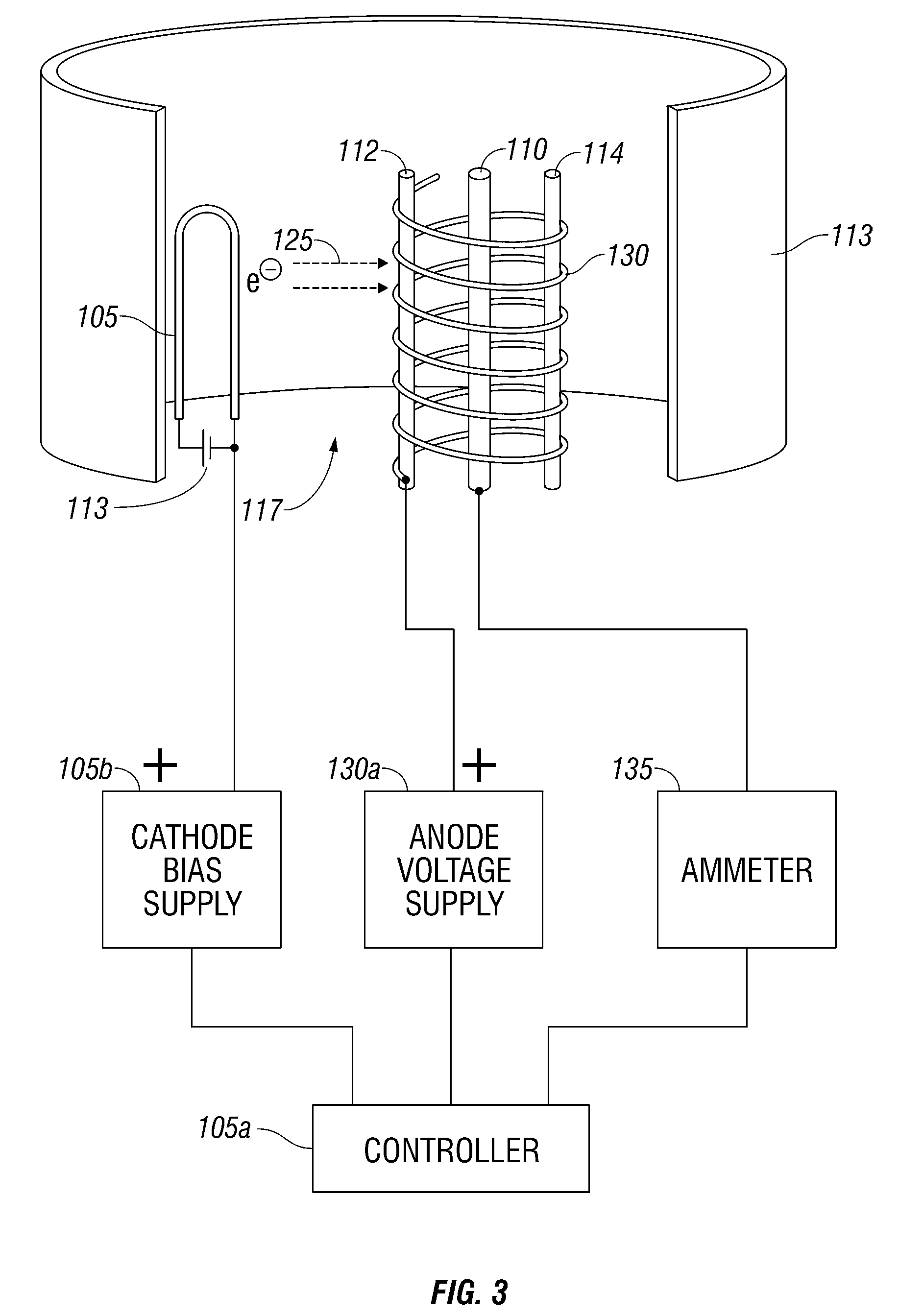Ionization gauge with operational parameters and geometry designed for high pressure operation
a technology of ionization gauge and operational parameters, applied in the direction of fluid pressure measurement, discharge tube main electrode, instruments, etc., can solve the problems of reducing the emission characteristics of electron sources, reducing the operational life, and complete burnout of tungsten cathodes, so as to reduce the number of electrons generated and reduce the operational life
- Summary
- Abstract
- Description
- Claims
- Application Information
AI Technical Summary
Benefits of technology
Problems solved by technology
Method used
Image
Examples
Embodiment Construction
[0034]A description of preferred embodiments of the invention follows.
[0035]Generally, as shown in FIG. 1, an ionization gauge 100 of the present disclosure has at least one electron source 105 and at least one collector electrode 110. The electron source 105 may be separated from the at least one collector electrode 110 by an optional isolation material 115 which prevents molecules and atoms of gas within a measurement chamber 117 from degrading the electron source(s) 105. The ionization gauge 100 also includes an ionization volume and specifically an anode 120. Anode 120 and the collector electrode 110 components may have various different configurations, and the gauge 100 is not limited to FIG. 1. In one embodiment, the ionization gauge 100 is a Bayard-Alpert type gauge, or an ionization gauge 100 where a heated cathode 105 is used to emit electrons toward an anode grid volume 120. However, it should be appreciated that the gauge 100 is not limited to any specific ionization gaug...
PUM
| Property | Measurement | Unit |
|---|---|---|
| bias voltage | aaaaa | aaaaa |
| pressures | aaaaa | aaaaa |
| bias voltage | aaaaa | aaaaa |
Abstract
Description
Claims
Application Information
 Login to View More
Login to View More - R&D
- Intellectual Property
- Life Sciences
- Materials
- Tech Scout
- Unparalleled Data Quality
- Higher Quality Content
- 60% Fewer Hallucinations
Browse by: Latest US Patents, China's latest patents, Technical Efficacy Thesaurus, Application Domain, Technology Topic, Popular Technical Reports.
© 2025 PatSnap. All rights reserved.Legal|Privacy policy|Modern Slavery Act Transparency Statement|Sitemap|About US| Contact US: help@patsnap.com



